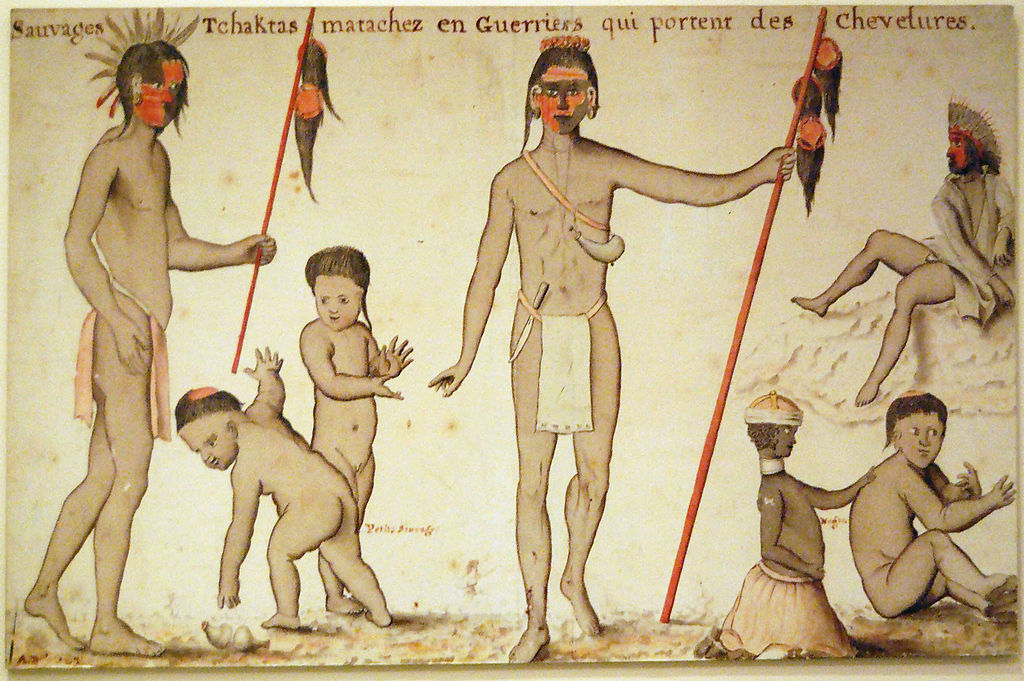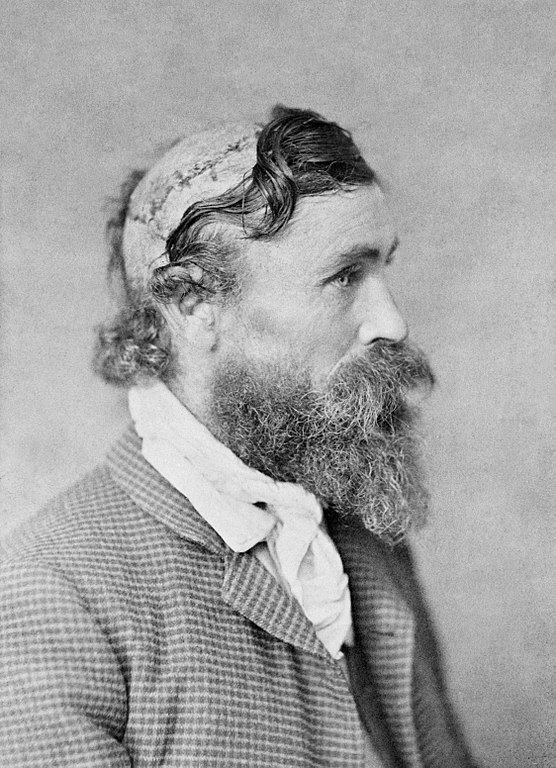In recent years many voices—both Native-American and white—have questioned whether Indians did in fact invent scalping. What is the evidence?
-
April 1977
Volume28Issue3

Americans have always assumed that scalping and Indians were synonymous. Cutting the crown of hair from a fallen adversary has traditionally been viewed as an ancient Indian custom, performed to obtain tangible proof of the warrior’s valor. But in recent years many voices—Indian and white—have seriously questioned whether the Indians did in fact invent scalping. The latest suggestion is that the white colonists, in establishing bounties for enemy hair, introduced scalping to Indian allies innocent of the practice.
This theory presupposes two facts: one, that the white colonists who settled America in the seventeenth century knew how to scalp before they left Europe; and two, that the Indians did not know how to scalp before the white men arrived. But are these facts? And if they are not, who did invent scalping in America?
Total silence from both participants and historians casts doubt on the first proposition. For no one has ever insinuated, much less proved, that the European armies who fought so ruthlessly the Crusades, the Hundred Years’ War, and the Wars of Religion ever scalped their victims. Even when they were combating a European form of “savagery” in Ireland, Queen Elizabeth’s forces were never scalped or ever took scalps. The grim, gray visages of severed heads lining the path to a commander’s tent were more terrible than impersonal shocks of hair and skin.
Nor does the second proposition fare much better. For there is abundant evidence from various sources that the Indians practiced scalping long before the white man arrived and that they continued to do so without the incentive of colonial cash.
The first and most familiar source of evidence is the written descriptions of the earliest European observers, who presumably saw the Indian cultures of the eastern seaboard in something like an aboriginal condition. When Jacques Cartier sailed up the St. Lawrence to what is now Quebec City in 1535, he met the Stadaconans, who showed him “the scalps of five Indians, stretched on hoops like parchment.” His host, Donnacona, told him they were from “Toudamans from the south, who waged war continually against his people.”
Twenty-nine years later, another Frenchman, artist Jacques Ie Moyne, witnessed the Timucuans’ practice of scalping on the St. Johns River in Florida:
"They carried slips of reeds, sharper than any steel blade … they cut the skin of the head down to the bone from front to back and all the way around and pulled it off while the hair, more than a foot and a half long, was still attached to it. When they had done this, they dug a hole in the ground and made a fire, kindling it with a piece of smoldering ember. … Over the fire they dried the scalps until they looked like parchment. … They hung the bones and the scalps at the ends of their spears, carrying them home in triumph.
When they arrived at their village, they held a victory ceremony in which the legs, arms, and scalps of the vanquished were attached to poles with “great solemnities.”
The French were not alone in witnessing the Indian custom of scalping. When the English brazenly set themselves down amid the powerful Powhatan Confederacy in Virginia, the Indians used an old tactic to try to quash their audacity. In 1608 Powhatan launched a surprise attack on a village of “neare neighbours and subjects,” killing twenty-four men. When the victors retired from the scene of battle, they brought away “the long haire of the one side of their heades [the other being shaved] with the skinne cased off with shels or reeds.” The prisoners and scalps were then presented to the chief, who hung “the lockes of haire with their skinnes” on a line between two trees. “And thus,” wrote Captain John Smith, “he made ostentation … , shewing them to the English men that then came unto him, at his appointment.”
The first Dutchmen to penetrate the Iroquois country of upstate New York also found evidence of native scalping. When the surgeon of Fort Orange (Albany) journeyed into Mohawk and Oneida territory in the winter of 1634-35,ne saw atop a gate of the old Oneida castle on Oriskany Creek “three wooden images carved like men, and with them … three scalps fluttering in the wind.” On a smaller gate at the east end of the castle a scalp was also hanging, no doubt to impress white visitors as well as hostile neighbors.
The list of Europeans who upon first meeting the eastern Indians found scalping prevalent is a long one. The first characteristic their descriptions share is an expression of surprise at the discovery of such a novel custom. The nearly universal highlighting of the custom in early accounts, the search for meaningful comparisons (such as parchment), the detailed anatomical descriptions of the act itself, and the total absence of any suggestion of white familiarity with the practice all suggest that their surprise was not disingenuous.
The second theme of these descriptions is that scalping was surrounded by a number of rituals and customs that could hardly have been borrowed from the freebooting European traders and fishermen who may have preceded the earliest authors. The elaborate preparation of the scalps by drying, stretching on hoops, painting, and decorating; scalp yells when a scalp was taken and later when it was borne home on raised spears or poles; occasional nude female custodianship of the prizes; scalp dances and body decorations; scalps as nonremunerative trophies of war to be publicly displayed on canoes, cabins, and palisades; and the substitution of a scalp for a living captive to be adopted in the place of a deceased member of the family—all these appear too ritualized and too widespread throughout eastern America to have been recent introductions by Europeans.
The final characteristic of the early accounts is an obvious search for words to describe scalping to a European audience. The older English word scalp did not acquire its distinctly American meaning until 1675 when King Philip’s War brought the object renewed prominence in New England. Until then, the best expressions were compounds such as “hair-scalp” and “head-skin,” phrases such as “the skin and hair of the scalp of the head,” or the simple but ambiguous word “head.” Likewise, the only meaning of the verb to scalp meant “to carve, engrave, scrape, or scratch.” Consequently, English writers were forced to use “skin,” “flay,” or “excoriate” until 1676 when the American meaning became popular. French, Dutch, German, and Swedish speakers were also forced to resort to circumlocutions until they borrowed the English words in the eighteenth century.
On the other hand, the languages of the eastern Indians contained many words to describe the scalp, the act of scalping, and the victim of scalping. A Catholic priest among the Hurons in 1623 learned that an onontsira was a war trophy consisting of “the skin of the head with its hair.” The five languages of the Iroquois were especially rich in words to describe the act that has earned them, however unjustly, an enduring reputation for inhuman ferocity. To the Mohawks and Oneidas, the scalp was onnonra ; the act of taking it, kannonrackwan . Their western brothers at Onondaga spoke of hononksera , a variation of the Huron word. And although they were recorded after initial contact with the Europeans, the vocabularies of the other Iroquois nations and of the Delaware, Algonquin, Malecite, Micmac, and Montagnais all contained words for scalp, scalping, and the scalped that are closely related to the native words for hair, head, skull, and skin. That these words were obviously not borrowed from European languages lends further support to the notion that they were native to America and deeply rooted in Indian life.
Understandably, words have done the most to fix the image of Indian scalping on the historical record, but paintings and drawings reinforce that image. The single most important picture in this regard is Theodore de Bry’s engraving of Le Moyne’s drawing of “How Outina’s Men Treated the Enemy Dead.” Based on Le Moyne’s observations in 1564-65, the 1591 engraving was the first pictorial representation of Indian scalping, one faithful to Le Moyne’s verbal description and to subsequent accounts from other regions of eastern America. The details—sharp reeds to extract the scalp, drying the green skin over a fire, displaying the trophies on long poles, and later celebrating the victory with established rituals by the sorcerer—lend authenticity to De Bry’s rendering and support to the argument for the Indian invention of scalping.
Drawings reveal yet another piece of evidence damaging to the new theory of scalping, namely scalp locks. A small braid of hair on the crown, often decorated with paint or jewelry, the scalp lock was worn widely in both eastern and western America. Contrary to the notion of scalping as a recent and mercenary introduction, the scalp lock originally possessed ancient religious meaning in most tribes, symbolizing the warrior’s life-force. For anyone to touch it even lightly was regarded as a grave insult. If the white man had taught the Indians to scalp one another for money, it is highly unlikely that the Indians were also hoodwinked into making it easier for their enemies by growing hairy handles. Something far deeper in native culture and history must account for the practice.

The final and most conclusive evidence of scalping in pre-Columbian America comes from archaeology. Since Indian skulls of the requisite age can be found to show distinct and unambiguous marks made by the scalping knife, the Indians must have known of scalping before the arrival of the white man. A wealth of evidence, particularly from prehistoric sites along the Mississippi and Missouri rivers and in the Southeast, indicates just such a conclusion.
Two kinds of evidence of scalping have been unearthed by archaeologists armed with trowels and carbon-14 dating. The first is cuts or scratches on the skulls of victims who had been previously killed. These cuts are of course subject to various interpretations, given the existence of post-mortem ritual mutilations in many Indian cultures. The trophy skulls found in several Hopewellian burial mounds in Ohio, for example, frequently exhibit superficial cuts, apparently made by flint knives in the process of removing the flesh.
But the second kind of evidence is more conclusive. In a number of prehistoric sites, circular lesions have been found on the skulls of victims who survived scalping long enough to allow the bone tissue to regenerate partially, leaving a telltale scar. Contrary to popular belief, scalping itself was not a fatal operation, and American history is full of survivors. Scalping is the only possible explanation for these lesions, which appear exactly where eyewitness descriptions and drawings indicate the scalp was traditionally cut.
In the light of such evidence, it is clear that Indians, not white men, introduced scalping to the New World. At the same time, it cannot be denied that the colonists encouraged the spread of scalping to many tribes unfamiliar with the practice by posting scalp bounties. Nor can it be forgotten that Americans of every stripe—from frontiersmen to ministers—were tainted by participating in the bloody market for human hair. Yet in the end, the American stereotype of scalping must stand as historical fact, whether we are comfortable with it or not.

